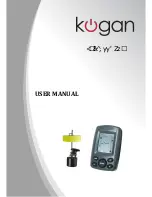
2.6 CHIRP SideVision™ overview
SideVision™
interprets signals from a pair of
side-looking transducers and builds up a detailed
underwater view as your vessel moves forward.
The transducers send pulses of sound waves into
the water on each side of your vessel, and record
the sound waves that reflect off the bottom, and off
objects on the bottom or suspended in the water
column. The received echoes are affected by the
bottom material (for example mud, gravel or rock),
and by any other objects in their path (for example
cables on the sea floor, bridge piers, wrecks, shoals
or fish).
SideVision™
produces two wide–angle side-to-side
beams, each with a thin fore-to-aft beam. The
coverage of the
SideVision™
beams is a swath on
each side of the vessel.
SideVision beams
D#####-1
SideVision™
is effective at lower vessel speeds.
The wide, thin beams produce clear target returns.
As your vessel moves forward, subsequent returns
build up to provide an image of the sea floor on each
side of your vessel.
The use of CHIRP processing and a high operating
frequency provide a detailed image, making it easier
to identify bottom structures around which fish may
reside. The narrow angle the beams make with the
bottom at longer ranges can reveal the shadows of
structures that protrude from the bottom.
CHIRP SideVision™ screen example
Note:
The
“Depth”
figure
shown
in
the
illustration
above
assumes
that
you
have
a
device
in
your
system
that
provides
depth
data.
Please
be
aware
that
not
all
transducers
and
/
or
sonar
modules
support
depth
sensing.
CP100 / CP200


























